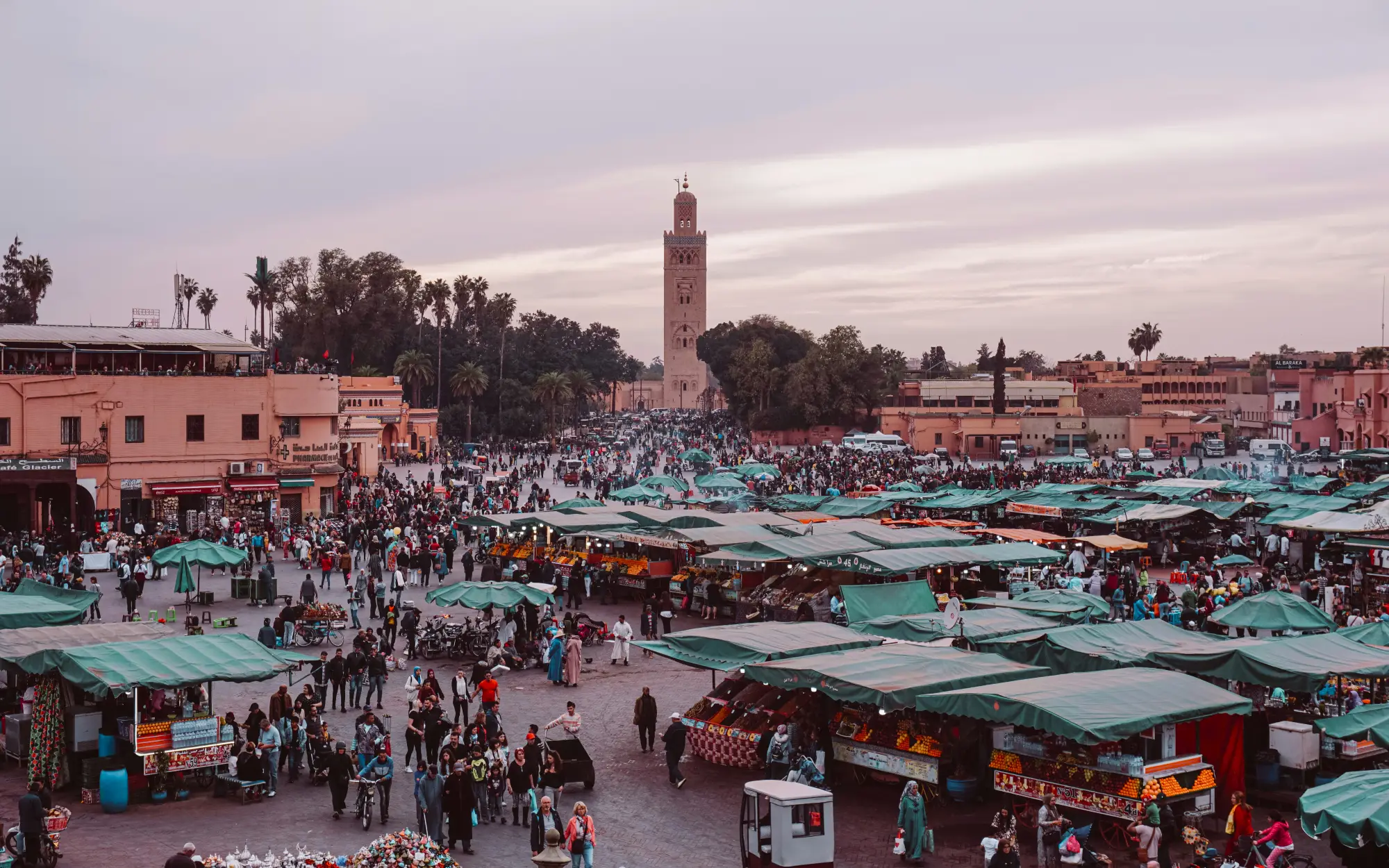
Medina of Marrakesh, one of the four imperial cities of Morocco
Declared a World Heritage Site by UNESCO in 1985, it is characterized by its typical and busy bustling streets with countless souks and squares where different artisans trade their products. This city in southern Morocco and its medina were founded in the 11th century by the Almoravids as the economic, political and cultural center of this nomadic people, and since its inception it has been an important transit city, oriented to the exchange of all kinds of goods of different trade routes.
In its architectural appeal, it is possible to document the different influences received over the centuries, as well as its constant change of hands, from the Almohads to its French colonial influence and its subsequent independence. Along with Mequinez, Fez and Rabat, it is one of the four imperial cities of Morocco since, throughout its history, it has also been the capital and center of power.
Surrounded by approximately 90 kilometers of walls built in adobe, the medina of Marrakech is the largest in all of Morocco. During the 12th century it would be necessary to build a Kasbah -walled fortification- to defend against external attacks. The layout of the wall was modified and extended on several occasions by the successive reigning dynasties until the definitive one that we see today. The wall of the medina is crossed by more than twenty gates, some of them monumental and in styles ranging from Almohad to Hispano-Arabic.
Bathed in the pink glow of its adobe walls, the medina of Marrakech is one of the great markets of the Maghreb, a mosaic of colors where the wonders of the past and present are outlined.

Terrace of one of the existing boutique Riads in the medina.
Within the walls and between the typical network of almost labyrinthine alleys there are large and important buildings such as old mosques, madrasas, palaces or mansions that tell the history of the city. As for civil architecture, the riads stand out, small palaces with beautiful architecture, some of them converted into excellent hotels, and which would complement the delicious experience for all the senses that the city exhumes.
The central Djemaa el Fna square can be taken as the starting point for all the tours, and from this point you can feel the frenetic human activity of the city, which opens the doors to the great souk of Marrakech and its endless alleys divided into guilds. of activities. A frenetic but mystical human activity that would captivate Yves Saint Laurent himself, who would inhabit the city for seasons and whose bond would shape part of his brilliant textile creations.
As monumental buildings, the dazzling Bahia Palace and the Madrasa Ben Youssef with its mosque stand out, which was the most important Koranic school in the Maghreb. The emblematic Koutoubia Mosque is another of the most significant buildings in Marrakech which, with its 70-meter minaret, stands out among the more than 300 existing mosque minarets in the medina, and its design and proportions inspired both the Hassan Tower in Rabat and to the Giralda in Seville.
Welcome to Morocco!
Another interest sights
Morocco
The beauty of Essaouira and its medieval walled medina
Morocco
Fez, a timeless journey through the heart of tradition
Morocco
Share this Sight with: